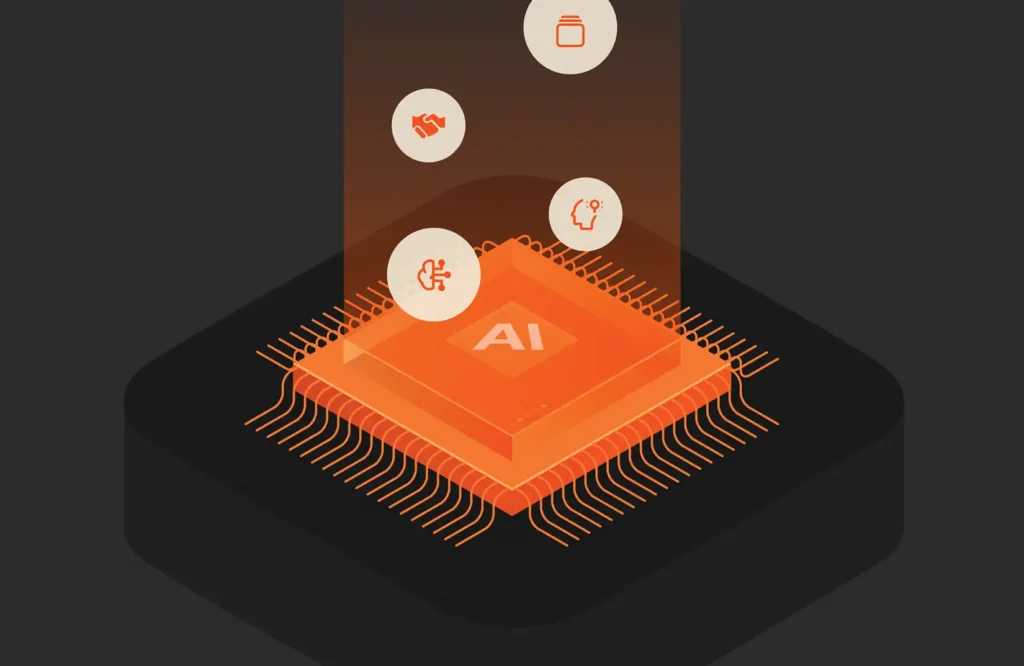Summary
AI applications are data-intensive and have unique requirements. Thanks to their portability, scalability, and efficiency, containers are an ideal choice for deploying and managing AI workloads.
Both AI and containerization have evolved rapidly into tech industry standards used by almost every major company across the globe. Understanding where and how AI and containers intersect can provide valuable insights into why containers are particularly well-suited for AI workloads.
Over the past few decades, AI has evolved from simple rule-based systems to complex deep learning models capable of processing vast amounts of data. This evolution has been fueled by advancements in algorithms, computing power, and data availability.
Simultaneously, containerization, popularized by technologies like Docker, has revolutionized the way companies deploy and manage software. Containers provide a lightweight, portable, and consistent environment for applications, allowing developers to package an application and its dependencies into a single unit.
Combined, these technologies have the potential to revolutionize the way technology works—and in many industries they already have—but issues arise with scale.
Let’s take a closer look into the containerization and AI zeitgeists and how best to take advantage of them via a well-chosen data platform.
Why Containers for AI?
Contrary to popular belief, containers are actually well-suited for AI workloads, mainly due to their:
Portability
Containers encapsulate all the dependencies required for an application to run, including libraries, runtime environments, and configuration files. This makes it easy to deploy AI models across different environments, such as development, testing, and production, without worrying about compatibility issues.
Scalability
AI workloads often require scaling resources based on demand, especially when dealing with large data sets or computationally intensive tasks. Containers can be quickly scaled up or down to meet changing workload requirements, enabling efficient resource utilization.
Isolation
AI models may have different requirements or dependencies, and running them in separate containers ensures isolation and avoids conflicts. This isolation also enhances security by containing potential vulnerabilities within individual containers.
Resource Efficiency
Containers share the host operating system’s kernel, resulting in lower overhead compared to traditional virtual machines. This efficiency is important for AI workloads, which often require significant computational resources.
Version Control and Reproducibility
Containers promote version control and reproducibility by capturing the entire environment in which an AI model was developed and trained. This ensures consistent results across different environments and facilitates collaboration among team members.
Flexibility and Modularity
Containers enable modular design principles, allowing AI applications to be broken down into smaller, reusable components. This modular approach promotes flexibility, agility, and easier maintenance of complex AI systems.
In short, AI and containerization have converged to make containers an ideal choice for deploying and managing AI workloads. Their portability, scalability, efficiency, and other features address the unique requirements of AI applications, making them indispensable tools for organizations looking to effectively leverage AI technologies.
But a discussion of containerization wouldn’t be complete without getting into the importance of Kubernetes.

Real-world Organizations Gaining ROI from AI
Kubernetes + Portworx for Data-intensive, AI-based Workloads
Container orchestration platforms like Kubernetes provide powerful tools for managing and scaling containerized AI workloads, which are data-intensive by nature. These platforms automate deployment, scaling, and monitoring, allowing organizations to efficiently manage AI infrastructure at scale. However, Kubernetes brings certain challenges with it that require the help of data platforms like Portworx® by Pure Storage. Let’s look at why.
Kubernetes, an open source container orchestration platform, has gained significant popularity for managing and scaling data-intensive workloads due to several key features.
Kubernetes Advantages
Kubernetes offers several key benefits to any company seeking to deploy data-intensive AI workloads, including:
Resource Management
Kubernetes allows for fine-grained resource allocation and management, which is crucial for data-intensive workloads. Users can specify resource requests and limits for CPU and memory, ensuring that each workload gets the necessary resources to perform efficiently. This helps prevent resource contention and ensures optimal utilization of hardware resources.
Horizontal Scaling
Data-intensive workloads often require scaling resources horizontally to handle large volumes of data or high processing loads. Kubernetes makes it easy to scale applications by automatically deploying additional instances (pods) based on defined metrics such as CPU utilization or custom application metrics. This elasticity ensures that applications can handle fluctuations in workload demand effectively.
Storage Orchestration
Kubernetes provides robust storage orchestration capabilities, allowing users to dynamically provision and manage persistent storage for data-intensive applications. This includes support for various storage solutions such as local storage, network attached storage (NAS), and cloud storage providers. Also, Kubernetes volume plugins enable seamless integration with storage systems, making it easier to manage data persistence and stateful applications.
High Availability
Data-intensive applications often require high availability to ensure continuous operation and data integrity. Kubernetes offers built-in features for automatic health checks, pod restarts, and rolling updates, which help maintain application availability and reliability. Additionally, Kubernetes supports multi-zone deployments across different data centers or cloud regions, further enhancing availability and disaster recovery capabilities.
Fault Tolerance
Kubernetes implements fault tolerance mechanisms to handle node failures and ensure that applications remain operational even in the face of infrastructure issues. Features like pod rescheduling and automatic node replacement help maintain application reliability by redistributing workloads and recovering from failures automatically.
Networking
Kubernetes provides a flexible and configurable networking model that enables efficient communication between components of data-intensive applications. Features like service discovery, load balancing, and network policies allow users to define complex network topologies and facilitate distributed data processing and communication among different parts of the application.
Ecosystem and Integrations
Kubernetes has a vibrant ecosystem with a wide range of tools, plugins, and integrations, including specialized frameworks for data processing and analytics, such as Apache Spark, TensorFlow, and Kafka.
But even with a powerful containerization tool like Kubernetes, which is technically built for scale, companies are still running into issues as they grow their user base and need to scale their apps.
Containerization doesn’t inherently solve the challenges associated with data management, and companies may struggle with issues such as data storage, data persistence, and data consistency across containers.
Also, while containers offer lightweight virtualization and efficient resource utilization, there can still be performance overhead compared to running applications directly on bare metal servers. Ensuring containerized applications can access sufficient compute, memory, and storage resources can be complex, especially when dealing with fluctuating workloads or multi-tenant environments.
Finally, some containerization platforms and tools may impose vendor lock-in, making it difficult to migrate data-intensive workloads between different cloud providers or on-premises environments. This can limit flexibility and scalability options for companies seeking to avoid dependency on a single vendor.
Why Portworx for Containers?
All the automation that Kubernetes brings simplifies the job of anyone who runs these services because it allows them to focus on higher-level tasks.
That said, to run these data-intensive applications at scale, you need tools that are tied to Kubernetes that can understand applications well and lay out the data clearly so that there’s no resource contention or vendor lock-in.
That’s where a data platform like Portworx really comes into play.
Portworks integrates closely with Kubernetes, works well with all the cloud providers, and offers everything from data management to storage management, storage backups and recovery, and database orchestration—everything you need to effectively run data-intensive applications in production. Portworx delivers all of it in one package.
For example, suppose you deploy a Postgres or a Mongo database to meet your increasing customer demand and scale. With Portworx, you can run those databases in production and at scale in a highly automated, self-managed, self-directed manner.
Portworx lets you:
- Run containerized AI workloads in a stateful manner by providing persistent storage, irrespective of protocol, for all stages of the AI process.
- Provide data locality for training jobs on Kubernetes. Portworx lets users keep data sets and model checkpoints on the same cluster, making it easily shareable, to accelerate training times.
- Provision the right storage resource based on SLAs. You can automatically orchestrate container volume placement, authentication, and data distribution based on SLAs.
- Enable multi-cloud/hybrid cloud AI environments regardless of whether you’re using bare metal, virtual machines, or containers. Use hybrid or multi-cloud environments regardless of the Kubernetes distribution.
Learn more about the Portworx advantage for AI workloads and why Portworx is the most complete Kubernetes data services platform.

Written By:
Free Trial
Test drive the cloud-native storage software platform for Kubernetes.






